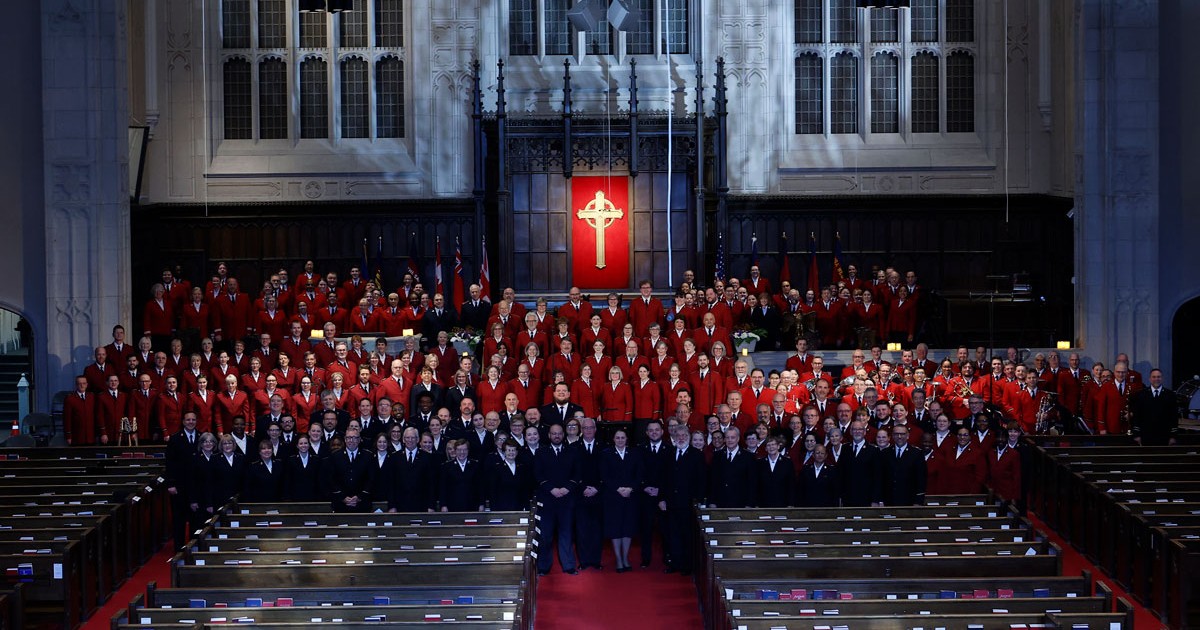Reading the New Testament Gospel accounts of the life of Jesus provides us with an overview of his ministry among the people of his time and place. For example, at important points in his Gospel, Matthew concisely summarizes Jesus’ ministry. The first of these summaries occurs early in Matthew, where we read, “Jesus went throughout Galilee, teaching in their synagogues and proclaiming the good news of the kingdom and curing every disease and every sickness among the people” (Matthew 4:23 NRSV). A similar summary description is found in Matthew 9:35, where the ministry of Jesus is described in virtually identical terms. In fact, these verses have in common a threefold description of the integrated ministry of Jesus: teaching in their synagogues, proclaiming the good news of the kingdom and healing the sick.
This pattern of ministry does much more than simply record a historical observation about Jesus’ activity; it establishes the pattern of ministry for the church. In other words, if we are to be faithful to the pattern given to us by Christ, we should integrate these three activities into our ministry in the world. For this reason, it seems worthwhile to consider each activity in some detail.
The Covenant People of God
Teaching in the synagogue focused on the exposition of the Torah (the law), the basic divine instruction for the community of Israel as the covenant people of God. According to Jewish tradition, the Torah itself was given at Mount Sinai in the time of Moses, shortly after Moses had led the Israelites out of slavery in the land of Egypt. In Egypt, the Hebrews had been the victims of an oppressive, brutal system that crushed those at the lowest social, economic and political levels of Egyptian society. When delivered from this harsh system, Israel was called to become a covenant community in which loyalty to the Lord and compassion for the weakest members of society replaced the Egyptian obsession with the prosperity of the rich and powerful.
Essentially, the Torah was instruction about how Israel should live as the people of God within the covenant relationship with the Lord that they had accepted. Within Jewish tradition, the Torah had to be interpreted and applied to new situations as they arose. It was this interpretation and application that took place in the synagogue.
Teaching, however, was important long before the establishment of synagogues. The Book of Deuteronomy makes this clear. As the Israelites approached the land of Canaan after a lengthy sojourn in the wilderness, Moses is said to have delivered a series of addresses—essentially the Book of Deuteronomy—rehearsing the story of Israel’s deliverance from slavery, encounter with the Lord at Mount Sinai and subsequent journey through the wilderness, and repeating the instructions God had given for the life that Israel would now live in a new land and a new situation.
In these new circumstances, the pressure to conform and adopt the practices and values of Canaan, which were similar to those of Egypt, would overwhelm Israel, unless there was constant instruction about their identity and character. Repeatedly, Deuteronomy encourages Israel to remember who they are and from where they have come. If Israel were to endure more than one or two generations beyond those who had experienced the exodus and God’s revelation at Sinai, teaching the children and adults their heritage, identity and values would be critical. According to Deuteronomy, teaching was an essential responsibility of the people of God.
A Community of Contrast
Given the importance of teaching in the Jewish tradition, it is little wonder that Matthew draws attention to the teaching ministry of Jesus. Of course, not all of Jesus’ teaching took place in synagogues. For example, the Sermon on the Mount (see Matthew 5-7) was delivered on a mountain rather than in a synagogue. Matthew organized Jesus’ subsequent teaching into four additional discourses (see Matthew 9:35-10:42; 13:1-52; 17:24-18:35; 24:1-25:46), which were delivered in various locations.
What we learn both from Matthew’s summary in Matthew 4:23 and from the rest of his Gospel is that teaching was one of the pillars of Jesus’ ministry. Especially for those who were his closest followers, Jesus devoted much of his time to teaching them. But the instruction offered by Jesus was much more than the sharing of information; it was also focused on the formation of the disciples’ character and, ultimately, on the formation of the character of the church. That is, through his teaching, Jesus was forming and shaping his disciples, developing their character and training them for the kingdom of heaven.
Just as Israel was to be an alternative community—in contrast to what they had experienced in Egypt and in contrast to their new home in the land of Canaan—so, too, the community that Jesus was forming and would leave to his disciples should be an alternative community, formed and shaped by the ministry and message of Jesus. The church was not to parrot the values of the larger Jewish or Roman society in which it lived; rather, it was to model a different way of living. This would be possible only if sound teaching continued to shape the identity of the church as a community of contrast.
The early decades of the church were a time when it was learning its place in the grand mission of God for the salvation of the world. Sound teaching was critical. The overarching story that unfolds in the Old Testament had to be imbibed and the memory of Jesus’ own teaching and life had to be preserved and applied to the new situation of the earliest Christian communities. But even more importantly, the early church had to cultivate a clear understanding of its identity as an alternative to the overpowering cultural, social, political and religious forces at work in the Roman Empire. Early Christians had to be taught the far-reaching implications of their experience of salvation through Jesus. They had to learn what the reorientation of life (repentance), in light of the approach of the kingdom of heaven, meant for them. They had to receive instruction in the basics of their new faith and in the basics of how to live out that faith.
Shaping Christian Character
No less today than in the first decades after the death and Resurrection of Jesus, proper instruction must remain a primary function of the church. We, too, need to be reminded that the church is called to be an alternative community. The failure to teach is one of the most devastating failures of the church. Proper, sound instruction shapes Christian character. The lack of such instruction renders Christians vulnerable to the fads and fashions of our larger culture.
In a time when the forces of various media continue to shape society with increasing power and with growing effect, how shall the church survive if we do not teach well and soundly? How will Christians know who they are and from where they have come? What story will shape us and our children if we don’t teach the gospel in its fullness? And if we are not clear about who we are and from where we have come, surely we will not be clear about where we should be going and what we should be doing.
We must, however, broaden our understanding of teaching beyond simple verbal communication. Teaching is not all about words. Jesus taught not only through his words but, even more importantly, through the life that he lived. Jesus modelled the virtues and values that he taught. He mentored his followers—especially his closest disciples—to prepare them to live out these virtues. By demonstrating the values of the kingdom of heaven in his life, Jesus taught his disciples in powerful ways far beyond simple exhortation. This is one of the primary claims of Matthew. Jesus lived out his own teaching. He walked the talk. That’s teaching that works!
Matthew makes clear that one of the pillars of Jesus’ ministry was his teaching, his instruction in the meaning of the Scriptures. If we are to continue to be the church, we need to make proper, effective and sound instruction of the people of God one of the primary ministries of the church. Twenty-minute sermons (or hour-long sermons?) on Sunday morning don’t cut it when we are bombarded by contrary messages 24-7. If we are to follow in the footsteps of Jesus, we must give sound, faithful, biblical teaching a central place in our ministry. In this, Jesus set the pattern for us to follow.
This is the first in a series of three articles on the integrated ministry of Jesus. In our second article, we will consider how Jesus proclaimed the good news of the kingdom of heaven.
Dr. Donald E. Burke is a professor of biblical studies at Booth University College in Winnipeg.
Illustration: rudall30/stock.Adobe.com
This story is from:










Leave a Comment